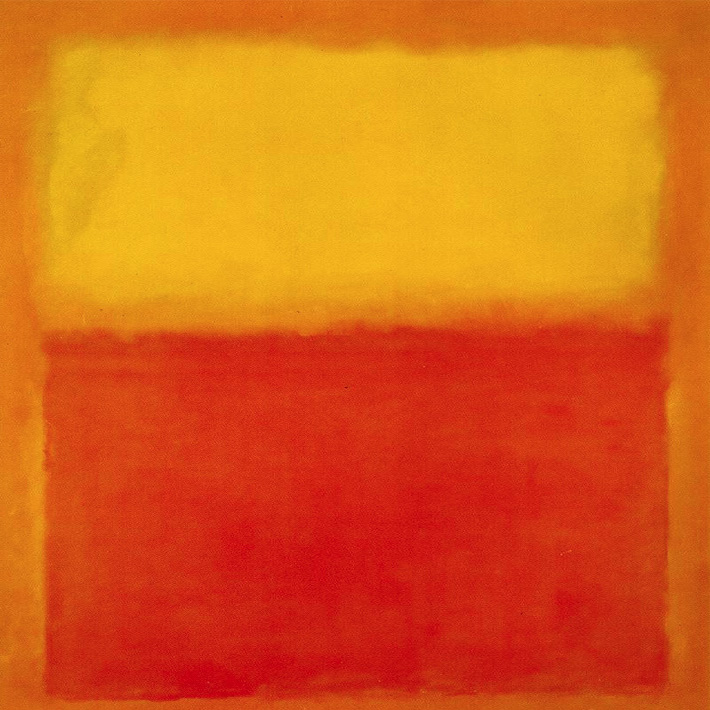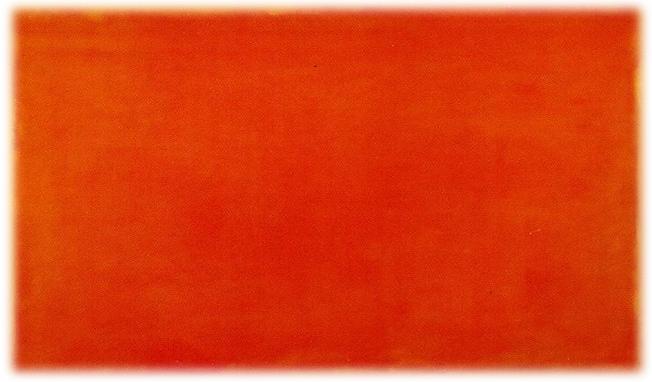
Mark Rothko was one of the painters that Greenberg referred to as a Color Field painter exemplified by Magenta, Black, Green on Orange, although Rothko himself refused to adhere to any label. For Rothko, color was "merely an instrument." In a sense, his best known works – the "multiforms" and his other signature paintings – are, in essence, the same expression, albeit one of purer (or less concrete or definable, depending on your interpretation) means, which is that of the same "basic human emotions," as his earlier surrealistic mythological paintings. What is common among these stylistic innovations is a concern for "tragedy, ecstasy and doom." By 1958, whatever spiritual expression Rothko meant to portray on canvas, it was growing increasingly darker. His bright reds, yellows and oranges of the early 1950s subtly transformed into dark blues, greens, grays and blacks. His final series of paintings from the mid-1960s were gray, and black with white borders, seemingly abstract landscapes of an endless bleak, tundra-like, unknown country.

